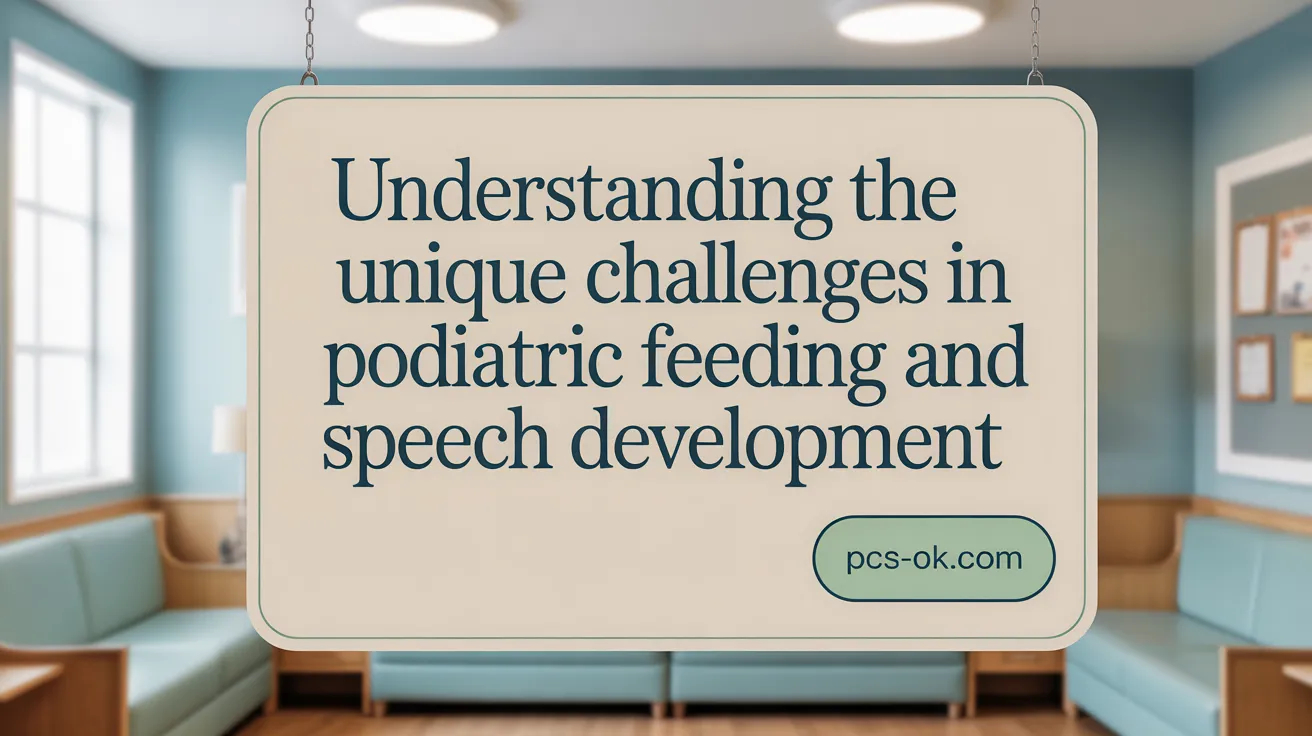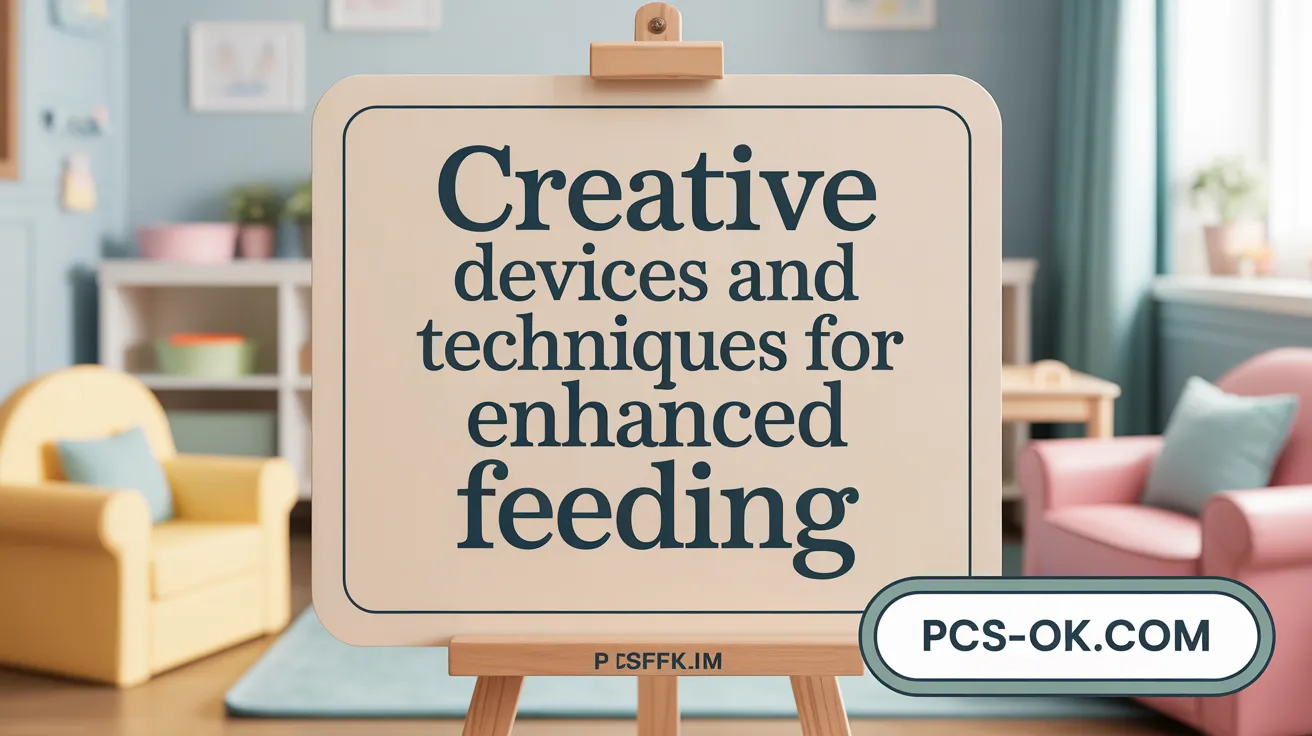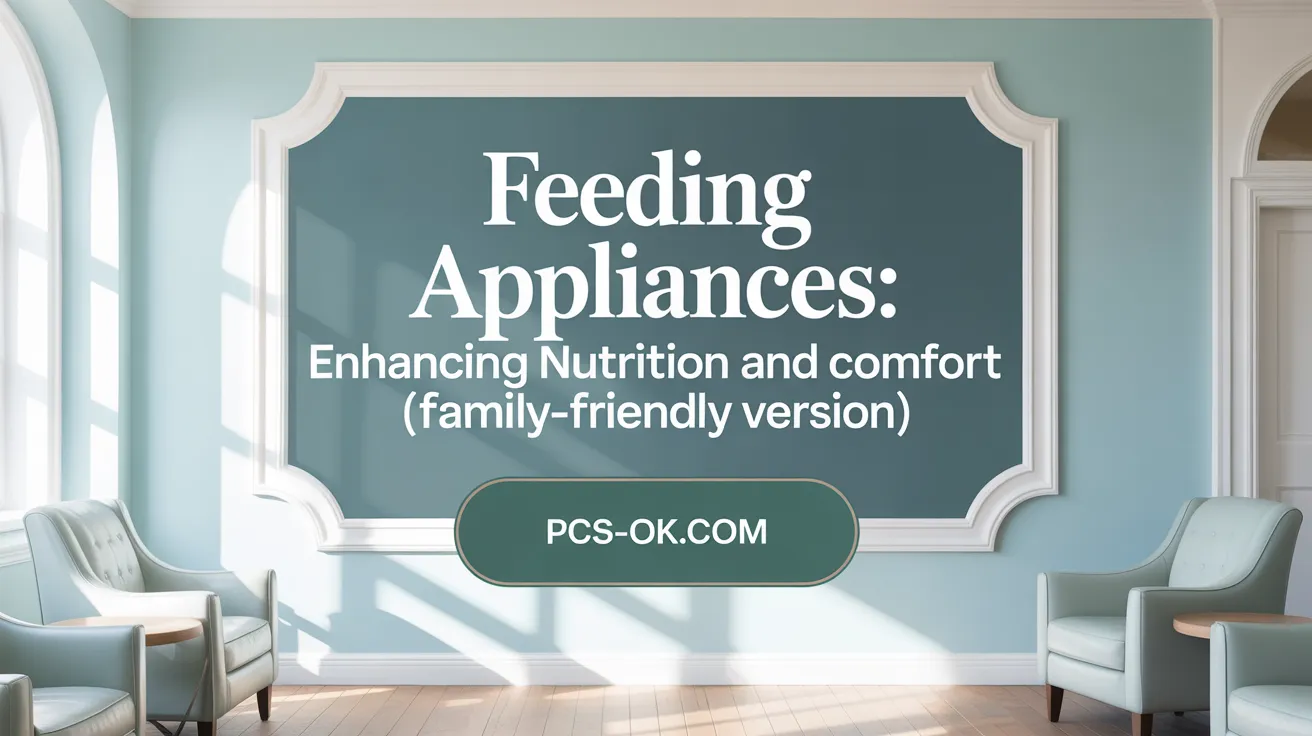Feeding Challenges in Children With Cleft Palate
Understanding the Feeding Challenges in Children With Cleft Palate
Children born with cleft palate face distinct feeding challenges due to anatomical differences that impact their ability to feed effectively. This article explores the nature of these difficulties, practical feeding strategies, and interventions designed to support both caregivers and healthcare providers in managing feeding issues associated with cleft palate. From specialized bottles to feeding appliances, and from early assessment to long-term behavioral considerations, we provide a comprehensive overview to improve outcomes for these children.
Anatomical and Physiological Feeding Challenges in Infants with Cleft Palate

Structural differences in cleft palate affecting feeding
Infants with cleft palate have an opening in the roof of the mouth due to incomplete formation during pregnancy. This structural anomaly creates a communication between the oral and nasal cavities, disrupting the normal mechanisms needed for effective feeding.
Loss of oral suction and its impact
One of the main challenges faced by these infants is their decreased or lost ability to generate a vacuum. Without a proper palate, they cannot build the intraoral pressure necessary for suction, which is essential for drawing milk during breastfeeding or bottle feeding.
Common feeding problems including nasal regurgitation and choking
As a result, babies often experience nasal regurgitation, where milk enters the nasal passages during feeding. They may also choke or gag more easily because they cannot effectively separate the nasal and oral passages while swallowing.
Physical limitations caused by cleft lip and/or palate
The physical characteristics of a cleft, whether involving the lip, palate, or both, pose specific limitations to feeding. These include difficulties in latching, maintaining suction, and sealing around the nipple or bottle teat. Cleft lip may also interfere with forming a proper seal due to the shape of the lip.
Importance of oral peripheral examination and assessment
A thorough oral examination is vital to determine the extent and type of cleft and to guide appropriate feeding strategies. Assessing the child’s oral structures helps in selecting suitable feeding methods and in planning surgical repair, ultimately supporting better nutritional outcomes.
| Aspect | Description | Additional Notes |
|---|---|---|
| Structural differences | Clefts in the lip, primary palate, secondary palate | Affects feeding, speech, and dental development |
| Loss of oral suction | Inability to create intraoral pressure | Leads to ineffective sucking and poor weight gain |
| Common feeding issues | Nasal regurgitation, choking, gagging | Requires modified feeding techniques |
| Physical limitations | Sealing around nipples, lip mobility | May require specialized bottles or appliances |
| Oral assessment | Evaluation of cleft extent, oral structures | Essential for personalized feeding plan |
Addressing these challenges early with specialized feeding methods and ongoing support is crucial. Proper interventions can significantly improve nutritional intake, promote growth, and reduce complications, paving the way for successful surgical repair and development.
Specialized Feeding Techniques and Devices to Support Nutrition

Use of Cleft-Adapted Bottles and Their Mechanisms
Infants with cleft palate often require specialized bottles that facilitate easier feeding by compensating for their inability to generate normal suction. These bottles work by compressing the nipple to release milk, reducing the need for intraoral pressure. This mechanism helps ensure that infants can effectively extract milk without the dangers of choking or nasal regurgitation.
Examples of Specialized Bottles and Nipples
Several brands offer bottles and nipples designed specifically for babies with cleft palate, including Medela SpecialNeeds® Feeder, Enfamil® Cleft/Lip Palate Nurser, Pigeon Baby Bottle, and NUK® nipples. These devices often feature fast flow silicone nipples and modified designs to accommodate the unique needs of these infants. Proper selection of nipple flow rate based on the baby’s feeding abilities is crucial for safe and effective feeding.
Proper Feeding Positioning and Nipple Placement
Positioning the baby upright or semi-upright during feeding helps prevent milk from entering the nasal passages. The nipple should be placed on the noncleft side or where tissue is most intact to promote better suckling. Maintaining an angle that keeps the nipple full of milk (tilted position) ensures consistent flow and reduces the risk of nasal regurgitation. Proper positioning combined with the right nipple placement optimizes feeding efficiency.
Modified Feeding Techniques such as Pulse Squeezing and Infant-Directed Compression
Caregivers often use techniques like pulse squeezing—gently squeezing the bottle in pulses—to help stimulate sucking and maintain milk flow. Careful compression of the nipple can assist in creating negative pressure within the oral cavity, facilitating suckling. These techniques demand patience and proper guidance but significantly improve the feeding experience for both infant and caregiver.
Managing Nasal Regurgitation and Frequent Burping During Feeds
Nasal regurgitation is common in babies with cleft palate due to the imperfect separation of nasal and oral cavities. Keeping the infant in an upright position minimizes this issue. Frequent burping is recommended because infants tend to swallow more air during feeds, which can cause discomfort. Gentle, consistent burping after or during feeding helps reduce gas, prevent colic, and improve overall feeding comfort.
| Aspect | Technique | Purpose | Additional Tips |
|---|---|---|---|
| Bottle selection | Use specialized bottles like Medela or Enfamil Nurser | Facilitate milk flow without suction | Choose based on infant’s flow rate needs |
| Positioning | Semi-upright (45-60 degrees) | Reduce nasal regurgitation | Keep head supported and stable |
| Nipple placement | On less affected side or tissue | Improve suckling | Avoid touching the cleft directly |
| Squeezing technique | Pulse squeezing | Aid in milk delivery | Squeeze in short pulses, not continuous |
| Burping | Frequent burping | Reduce discomfort | Burp every 2-3 minutes during feed |
Role and Impact of Feeding Appliances in Cleft Palate Management

What are feeding appliances and how do they function?
Feeding appliances, also known as feeding plates, are custom-made devices designed specifically for infants with cleft palate. They consist of an acrylic resin base with metal components that fit into the mouth, covering the cleft and helping to seal the nasal cavity from the oral cavity. By creating a barrier, these appliances restore the separation of the nasal and oral passages, allowing the baby to suck more effectively.
What materials are used in making feeding appliances?
The most common materials include autopolymerizing acrylic resin for the base and stainless steel wire for structural support. These materials are chosen for their durability, safety, and ease of cleaning. The appliance is custom-fitted to each infant’s mouth, ensuring comfort and optimal function.
How do feeding appliances reduce nasal regurgitation and choking?
By obturating the cleft, feeding appliances prevent milk from entering the nasal cavity during feeding, significantly reducing nasal regurgitation. They also help in stabilizing the oral cavity, decreasing the risk of choking. This leads to safer feeding sessions and improves the child’s ability to receive adequate nutrition.
What are the benefits of using these appliances?
Utilizing feeding appliances enables infants to feed more efficiently, which helps ensure proper growth and nutritional status. They also shorten feeding times and decrease the likelihood of infections caused by milk entering the nasal passages. Overall, these devices contribute greatly to the child’s immediate health and long-term development.
Why is multidisciplinary intervention important?
Effective management of feeding issues in infants with cleft palate involves a team approach, including pediatric dentists, surgeons, speech therapists, and pediatricians. Dental professionals are crucial in fabricating and adjusting feeding appliances to meet the evolving needs of the child. Early intervention with such appliances can prevent complications and support better surgical and speech outcomes.
| Aspect | Details | Additional Info |
|---|---|---|
| Material Used | Acrylic resin, stainless steel wire | Ensures durability and safety |
| Functions | Seals cleft, prevents nasal regurgitation | Facilitates effective suckling |
| Benefits | Improves nutrition, reduces infections | Supports growth and development |
| Team Involvement | Pediatric dentists, surgeons, therapists | Provides comprehensive care |
Early Intervention, Assessment, and Feeding Support Strategies

Why is early feeding intervention so important for babies with cleft palate?
Early feeding support is crucial because infants with cleft palate often struggle with effective suckling and swallowing. If these difficulties are not addressed promptly, it can lead to poor weight gain, dehydration, and increased risk of infections. Early intervention helps ensure adequate nutrition, supports growth, and can prevent complications that might delay necessary surgical repair.
How does prenatal education prepare caregivers?
Prenatal education from specialized cleft centers equips parents with important knowledge about their baby’s potential feeding challenges before birth. It helps parents understand what to expect and prepares them for early feeding approaches, reducing anxieties and increasing confidence in managing their baby’s nutrition needs.
Why is assessment of the cleft’s type and extent critical?
Thorough evaluation of the oral structures—such as the lip, primary palate, secondary palate, and submucous cleft—is essential to determine the most suitable feeding methods. For example, babies with cleft lip alone might feed successfully with standard techniques, while those with cleft palate often require specialized bottles or feeding appliances to help create the necessary oral pressure.
What are the common emotional challenges faced by parents?
Managing feeding difficulties can be emotionally taxing for parents, often leading to feelings of helplessness, fear, and low self-efficacy. The stress of ensuring their child’s proper nutrition and concerns about developmental delays may affect their mental health. Providing emotional support and counseling can help parents cope better.
How do clinical psychologists assist in managing feeding behaviors?
Clinical psychologists can support families by addressing behavioral feeding issues, reducing parental anxiety, and promoting positive mealtime routines. They may work with children to improve feeding cooperation and help parents develop patience and effective strategies, ultimately fostering healthier feeding habits and emotional wellbeing.
Transitioning Feeding Practices and Introducing Solids Safely
When should children with cleft palate start eating solids and using cups?
Infants with cleft palate can typically begin introducing solid foods around 6 months of age. This timeline aligns with typical developmental milestones and is suitable once the baby shows signs of readiness, such as sitting upright with support and expressing interest in eating.
For cup introduction, starting as early as 6 months is recommended if the child demonstrates good head control and can hold a cup with assistance. A soft spout or open cup that doesn’t require suction is ideal, helping to promote oral skills without creating negative pressure.
What foods and textures are suitable, and which should be avoided?
Initially, start with single-ingredient, smooth foods like Stage 2 baby foods or thicker cereals, avoiding lumps. Gradually progress to softer, melting solids around 8-9 months, such as well-cooked vegetables, mashed fruits, and small pieces of table foods.
Certain foods should be avoided to prevent choking hazards: nuts, grapes, popcorn, hot dog slices, hard candies, and tough meats. These can cause choking and are dangerous for developing feeding skills.
Why are signs of readiness important for safe feeding?
Recognizing early signs of readiness helps ensure the child can safely and comfortably handle solid foods. Indicators include interest in watching others eat, holding their head up independently, sitting upright with support, leaning forward during feeds, and keeping the tongue inside the mouth.
How should feeding be supervised during solids introduction?
Close supervision is essential, especially as children learn new eating skills. Always watch to ensure they swallow properly and avoid food entering the nasal cavity. Staying positive and patient during mealtimes creates a reassuring environment that encourages safe eating behaviors.
What are the benefits of spoon feeding and open cups?
Spoon feeding and open cup use support oral motor development. They help strengthen muscles involved in swallowing, promote tongue and lip movements, and prepare the child for later eating skills. These methods also facilitate better control over bite sizes and help children become comfortable with new textures, easing transition to more advanced foods.
Insights from Clinical Studies on Feeding Techniques and Nurse Practices
What do studies reveal about bottle-feeding techniques used by nurses for children with cleft palate?
Recent qualitative research in Japan has shed light on how nurses approach feeding children with cleft lip and palate. The study involved experienced nurses who shared insights on preparations before feeding, methods of nipple insertion, assistance during sucking, and when to stop feeding.
The findings highlighted that nurses employ a variety of techniques individually adapted to each child’s needs. While some methods aim to facilitate effective suckling and minimize discomfort, the effectiveness of many techniques remains unverified, emphasizing the need for further research.
What conflicting methods of nipple insertion are observed and why?
Nurses use different strategies for inserting the nipple into a child’s mouth. Some techniques involve closing the cleft by positioning the nipple to create negative pressure, which helps the child suck more effectively. Others avoid touching the cleft to prevent ulceration or injury.
This variation stems from the lack of consensus and limited evidence on the safest, most effective approach. The conflicting practices reflect a need for standardized guidelines grounded in scientific research.
What are the classifications of feeding assistance techniques?
Nurses categorize feeding assistance into three main groups:
| Category | Sub-categories | Purpose |
|---|---|---|
| Preparation | Improving mouth movement, calming breath | Prepare the child for feeding |
| Nipple Insertion | Techniques to close cleft and create negative pressure | Facilitate effective suckling |
| Sucking Support | Awakening the child, encouraging sucking | Enhance oral intake |
Each aims to optimize feeding efficiency while reducing distress and discomfort.
How do nurses determine when to stop feeding?
Decisions to cease feeding are based on various physiological and behavioral cues. These include reduced alertness, signs of fatigue, worsening vital signs, or when the child no longer displays interest.
| Criterion | Sub-categories | Description |
|---|---|---|
| Physiological Signs | Vital sign changes, fatigue | Indicate when feeding is no longer safe or effective |
| Behavioral Cues | Unresponsiveness, distress | Signal readiness to stop |
Monitoring these cues helps prevent overfeeding and ensures safety.
Why is further research into technique effectiveness necessary?
Although participating nurses express a desire to learn more about optimal feeding practices, there is a lack of scientific validation for many techniques used in clinical settings. Conflicting practices among professionals highlight the need for rigorous studies to confirm which methods truly benefit children with cleft palate.
Understanding the outcomes of different approaches will lead to better standardization, improved safety, and more effective support for both children and caregivers.
Supporting Caregivers and Healthcare Providers in Feeding Management
Guidance on feeding device selection and coordination with physicians
Choosing the appropriate feeding device is essential for infants with cleft palate. Specialized bottles, such as Enfamil® Cleft/Lip Palate Nurser, Medela SpecialNeeds® Feeder, Pigeon Baby Bottle, and NUK® nipples, help facilitate feeding by reducing the effort needed to extract milk. The nipple flow rate should match the infant’s feeding ability, ensuring safe and efficient intake. Coordination with a pediatrician or a dental specialist is vital to select the most suitable device and to tailor the feeding approach as the child’s needs evolve.
Managing feeding-related reflux and nutrition monitoring
Babies with cleft palate often experience nasal regurgitation and reflux due to structural challenges. Positioning the infant upright or semi-upright during feeds helps minimize these issues. Monitoring weight gain and adjusting feeding volumes and caloric density are crucial to ensuring proper growth. Sometimes, adding fortifiers to breast milk or formula is necessary to meet increased nutritional needs. Regular assessment by healthcare providers helps address persistent reflux and prevents complications like malnutrition.
Addressing parental anxiety and self-efficacy
Feeding difficulties can cause significant emotional stress for parents. Feelings of inadequacy and anxiety are common, especially when initial feeding attempts are challenging. Providing education, reassurance, and practical support can boost parental confidence. Support groups and counseling, including involving psychologists when necessary, help parents develop coping strategies and improve their self-efficacy, ultimately benefiting the child’s development.
Strategies to prevent unhelpful mealtime behaviors
Children with cleft palate may exhibit problematic behaviors at mealtime, influenced by their structural difficulties and parental approaches. Consistent, positive mealtime routines, avoiding screens during feeding, and encouraging patience can reduce these behaviors. Tailoring mealtime practices to the child’s developmental stage, such as introducing small bites and positive reinforcement, decreases frustration and fosters healthier eating habits.
Importance of continued feeding support beyond infancy
Feeding challenges may persist into childhood, especially for higher-risk groups or those with additional complications. Continuous support from multidisciplinary teams—including speech therapists, dentists, and psychologists—helps manage ongoing difficulties. Early intervention and ongoing education ensure that children attain optimal nutritional status and develop positive feeding behaviors, laying a foundation for successful speech and social development.
Optimizing Feeding Outcomes for Children with Cleft Palate
Effective feeding management for children with cleft palate requires a multifaceted approach combining understanding of anatomical challenges, tailored feeding techniques, use of specialized devices, and early multidisciplinary intervention. Supporting caregivers through education, emotional guidance, and practical strategies is essential to overcome feeding difficulties and promote healthy growth and development. Ongoing research and clinical collaboration will continue to refine feeding practices and improve quality of life for affected children and their families.
References
- Feeding Your Baby with Cleft Palate
- Management of feeding Problem in a Patient with Cleft Lip …
- Cleft Lip / Cleft Palate Feeding | Advice for New Parents
- Bottle-feeding techniques for children with cleft lip and …
- A Tutorial for Feeding Infants With Orofacial Clefting
- Feeding Your Baby with Cleft Palate
- Feeding
- The effects of cleft lip and/or palate on mealtime behaviour
